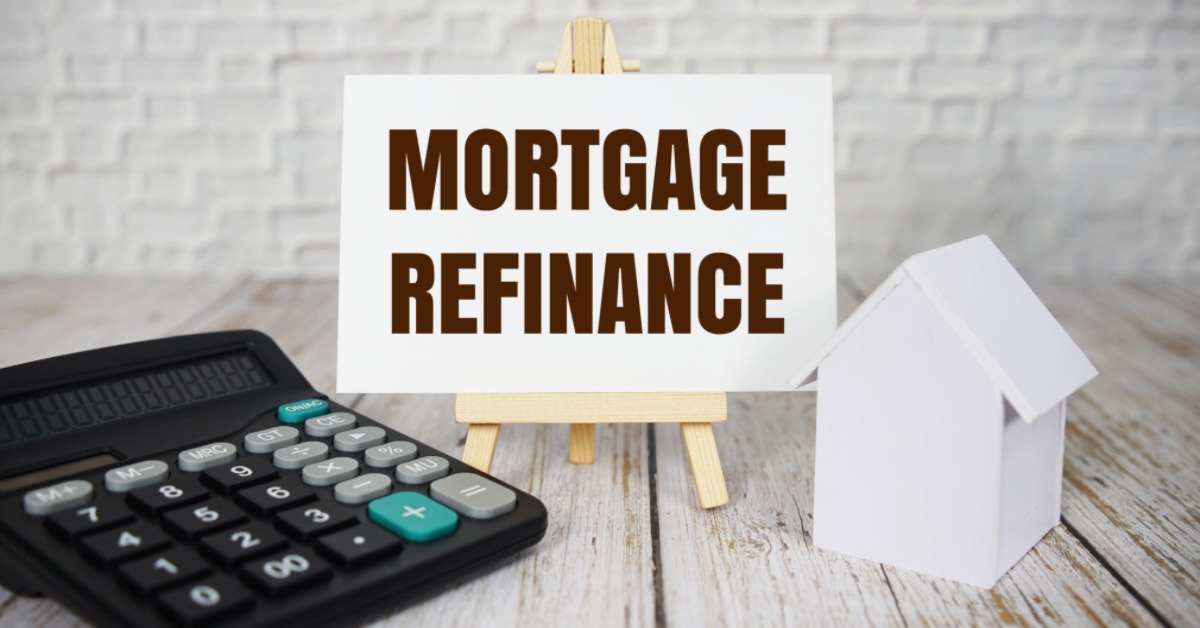For many Americans, mortgage refinancing has moved from a financial luxury to a tactical necessity. With 30-year fixed rates hovering near 6.7%, a dip from the 6.9% highs earlier this year, homeowners are finding renewed incentive—especially those who took out loans above 7% in 2023 or 2024. If executed smartly, refinancing in 2025 can deliver lower payments, shorter loan lifespans, and substantial interest savings. But it demands careful planning.
As of early July, the average 30-year fixed mortgage rate in the U.S. fell to 6.67%, its lowest since April 2025 Similarly, the 15-year fixed rate dropped to 5.80%. In tandem, mortgage application activity surged—refinancing inquiries jumped 56% year-over-year, with total mortgage applications up 9.4% for one week in early July, signaling growing optimism
Most lenders expect further modest easing through rest of 2025—forecasting average rates to finish the year between 6.2%–6.3%, down from 6.7% today . Still, with underlying inflation and Fed policy remaining cautious, lower rates are expected but not guaranteed.
There are four common reasons homeowners refinance:
- Lower monthly payments
Refinancing from 7.5% to 6.5% on a $400K loan can save approximately $270/month—about a 20% reduction - Shorten your term duration
Moving from a 30-year to a 15-year mortgage saves money in interest, builds equity faster, and locks in higher predictable payments - Switch from ARM to fixed rate
Escaping future adjustable rate increases by locking in a fixed-rate loan can protect against rising interest and stabilize budgets. - Unlock equity with cash-out
Refinancing can free up funds for home improvements, investments, or debt consolidation—also helps drop mortgage insurance
Refinancing involves closing costs and fees—typically 2%–5% of the loan amount To determine whether it’s worth it:
- Calculate your monthly savings.
- Divide total cost by savings to find the break-even point.
- If you plan to stay in your home beyond that period, refinancing can be worthwhile—even with a drop as small as 0.25% in rate
For example: $6,000 in costs and $200/month savings equates to 30 months to recoup expenses.
Shop at least 3–4 lenders to compare APRs—not just rates. One extra quote can save borrowers up to 28 bps, translating into hundreds annually
Buying down your rate through points (each typically lowers rate by 0.125%–0.25%) makes sense if you plan to stay in the home beyond the recovery window .
This lets lenders cover closing costs in exchange for a slightly higher rate—best if you’re planning a quicker move or want immediate cash flow relief.
Locking in a 5.8% 15-year fixed rate versus staying in a severely variable ARM offers security—sometimes sacrificing a few hundred dollars for predictability pays off later.

- Homeowners with rates above 7% from recent years.
- Those planning to stay 3+ years, long enough to cover refinancing costs.
- Borrowers with strong credit (620+ conventional, higher for cash-out), good equity (≤80% LTV), and responsible debt ratios (DTI <43%)
- Financial profiles with marginal credit, low equity, or high DTI—even low rates may not help.
- If your current rate is already <6.5% or you’ll move soon, break-even may not justify refinancing costs .
- Check your credit and resolve issues before applying.
- Monitor home valuation; fluctuating markets can affect equity and eligibility.
- Get pre-approved to identify up-front costs and lock periods.
- Read the fine print—know your true break-even considering both fees and rate changes.
- Lock in your rate strategically, ideally within a 30–45-day window to ensure availability.
- Principal recasting after a large payment can lower your monthly cost.
- Home equity line of credit (HELOC) may offer a lower-rate alternative for equity tapping.
- Loan modifications—including short refinance or those by HUD—help homeowners underwater or in financial distress
- Many borrowed at 6.5–8% in 2023–24 hoping to refinance later—but persistent high rates have delayed that dream. Some are exploring ARMs, recast, and HELOC alternatives
- In states like Connecticut, with a 30-year average at 6.74%, homeowners are also opting for rate locks now—not waiting for big dips
- Modest rate decline expected as inflation cools—but significant drops unlikely. Experts project end-of-year averages of 6.2%–6.3%, and roughly 6.5% on refinances .
- Any rate drop below early-July levels could spark a sharp rise in mortgage activity—especially among those with ARM resets looming.
| Step | Action |
|---|---|
| 1 | Check your credit, LTV, DTI, and pre-tax rate comparison |
| 2 | Estimate break-even using your savings and scenario |
| 3 | Contact 3–4 lenders; compare APRs and programs (conventional, FHA, cash-out, ARMs) |
| 4 | Choose between full refinance, ARM-to-fixed, recast, or HELOC |
| 5 | Decide on point purchase vs no-cost refinance |
| 6 | Lock rate at optimal time; finalize paperwork and inspections |
Refinancing in 2025 is more nuanced than in recent boom years—but for homeowners with higher existing rates, sufficient equity, and time to stay, it still offers thick potential for savings and debt control. Whether you want a shorter term, lower payment, or tapping into equity, today’s strategies allow homeowners to make intentional, beneficial moves.

